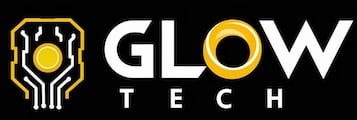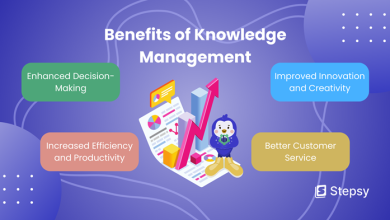
How efficiently is your business operating right now? Are your employees spending more time on repetitive tasks than on high-value work? Could better tools or smarter workflows help your organization achieve more with the same resources? In today’s fast-paced business world, these questions are critical. Efficiency is no longer optional—it is a necessity. Organizations that streamline operations, leverage technology, and invest in the right talent are more likely to maintain a competitive edge. Efficiency isn’t just about doing things faster; it’s about doing things smarter, reducing wasted resources, and maximizing the value of every action and decision. By combining smart tools with skilled talent, businesses can optimize processes, enhance productivity, and ultimately drive growth.
Understanding Business Efficiency
Business efficiency refers to the ability of an organization to achieve its objectives while minimizing waste and optimizing resource use. This includes reducing unnecessary steps in workflows, eliminating redundant processes, and ensuring employees spend their time on high-value activities. Efficiency also encompasses how well technology is integrated into operations and how effectively teams communicate and collaborate.
Companies that fail to focus on efficiency often struggle with higher operational costs, lower employee satisfaction, and missed opportunities for growth. On the other hand, organizations that embrace efficiency can scale faster, adapt to market changes more effectively, and maintain a stronger bottom line.
The Role of Smart Tools in Enhancing Efficiency
Modern businesses have access to an array of tools designed to improve productivity and streamline workflows. Smart tools can automate repetitive tasks, provide real-time insights, and simplify decision-making processes. When chosen and implemented correctly, these tools can be transformative.
1. Automation Software
Automation is one of the most powerful ways to boost efficiency. Tools like eWorkOrders CMMS help businesses manage work orders, preventive maintenance, and asset tracking without manual oversight. By automating routine tasks, employees can focus on more strategic initiatives, reducing human error and speeding up operations. A modern CMMS not only schedules maintenance but also tracks asset performance, helping companies prevent costly downtime and optimize resources.
Similarly, automation in areas like accounting, marketing, and customer service can free up significant time. From automated invoicing to AI-driven chatbots, these tools handle repetitive activities while ensuring consistency and accuracy.
2. Data Analytics Platforms
In the age of big data, making informed decisions quickly is crucial. Platforms such as Analytica provide businesses with advanced analytics capabilities, transforming raw data into actionable insights. By monitoring key performance indicators (KPIs) and trends, companies can identify inefficiencies, forecast challenges, and make strategic choices that improve overall performance.
Data-driven decision-making also empowers managers to allocate resources more effectively, reduce waste, and enhance customer satisfaction by understanding their preferences and behaviors.
3. Collaboration and Project Management Tools
Efficient communication and collaboration are central to productivity. Project management tools such as Asana, Trello, or Batch’s planner features streamline task tracking, team communication, and project timelines. Teams can share updates in real-time, prioritize work effectively, and avoid the confusion of multiple email threads or fragmented processes.
Batch, for example, allows teams to plan events and experiences collaboratively, incorporating voting, RSVPs, checklists, and travel information in one unified platform. Such tools reduce friction and ensure everyone stays aligned, which directly impacts efficiency.
4. IT Services and Cloud Solutions
Cloud computing and IT services, such as those offered by Cortavo in Atlanta, provide scalable solutions for businesses of all sizes. By storing data in the cloud and using secure remote access, organizations reduce the need for physical infrastructure, minimize downtime, and ensure seamless operations. Cloud-based services also enable teams to collaborate from anywhere, improving both flexibility and productivity.
Additionally, IT services can optimize software implementation, maintain security standards, and provide technical support, which prevents disruptions and keeps business processes running smoothly.
Leveraging Talent for Maximum Impact
While tools are essential, talent remains the core of any efficient organization. Skilled employees who understand technology and can apply it strategically are key to achieving operational excellence. Businesses must focus not only on hiring the right talent but also on training and empowering their teams to use tools effectively.
1. Pre-Vetted Skilled Professionals
Hiring pre-vetted professionals, such as content marketers or IT specialists through platforms like GrowTal, ensures that organizations gain immediate access to skilled talent without the delays and risks of traditional recruitment. Working with pre-vetted marketing experts can accelerate campaign success and ensure consistent, high-quality content from day one. Pre-vetted talent is often more adaptable and can integrate into existing workflows efficiently, reducing the learning curve and accelerating productivity.
Such professionals also bring expertise in optimizing processes, suggesting better tools, and applying best practices that improve both efficiency and outcomes.
2. Continuous Learning and Development
Efficiency is not static; it requires ongoing improvement. Encouraging employees to engage in continuous learning, whether through workshops, online courses, or internal training programs, equips teams with the latest knowledge and skills. Employees who understand emerging technologies, analytics techniques, or project management strategies can contribute to smarter workflows and innovative solutions.
Investing in development also increases employee engagement and retention, as individuals feel valued and empowered to grow. A motivated workforce is naturally more efficient and proactive in identifying and solving problems.
3. Cross-Functional Collaboration
Efficiency often emerges at the intersection of diverse skills and perspectives. Encouraging cross-functional collaboration allows employees to share insights, address bottlenecks, and develop holistic solutions. Tools that facilitate collaboration, like cloud platforms or integrated project management software, complement this approach by making information accessible across departments.
By fostering a culture where teams work together seamlessly, businesses can reduce duplication of efforts, accelerate decision-making, and optimize resource allocation.
Integrating Tools and Talent
The real power of business efficiency lies in the synergy between tools and talent. Technology alone cannot solve inefficiencies without skilled employees to guide its use. Conversely, even the most talented workforce cannot reach full potential if hindered by outdated processes or inadequate tools.
A strategic approach involves:
- Assessment: Identify areas where inefficiencies exist and determine which tools and skills are needed to address them.
- Implementation: Deploy automation, analytics, and collaboration tools, ensuring teams are trained to use them effectively.
- Monitoring: Track performance metrics to evaluate the impact of new tools and processes, making adjustments as needed.
- Optimization: Continuously refine workflows, incorporate new technologies, and update skill sets to maintain efficiency as the business grows.
For example, a manufacturing business using eWorkOrders CMMS for preventive maintenance can pair this with cross-trained technicians who understand both machinery and digital management systems. The combination reduces downtime, extends asset life, and increases overall productivity.
Benefits of Optimized Efficiency
The advantages of combining smart tools with talent are far-reaching:
- Reduced Operational Costs: Automation and streamlined workflows cut down unnecessary spending.
- Faster Decision-Making: Analytics platforms and collaborative tools allow teams to act on real-time insights.
- Improved Employee Satisfaction: Removing repetitive tasks and investing in development fosters engagement.
- Enhanced Customer Experience: Efficient operations lead to timely service delivery, higher quality, and better responsiveness.
- Scalability: Streamlined processes and skilled teams make it easier to expand operations without significant delays or costs.
Companies that master efficiency are better positioned to respond to market changes, innovate continuously, and maintain a competitive advantage.
Overcoming Common Challenges
Despite the clear benefits, businesses often encounter obstacles when pursuing efficiency. Common challenges include resistance to change, inadequate training, and choosing the wrong tools. Addressing these issues requires thoughtful planning and strong leadership.
Organizations must communicate the benefits of new tools and processes clearly to employees, provide sufficient training, and solicit feedback to refine implementation. Leadership should also model efficient practices, demonstrating how the combination of technology and talent drives success.
Conclusion
Optimizing business efficiency is a continuous journey that requires both smart tools and capable talent. Automation software, data analytics platforms, project management tools, and cloud services can transform operations, but they must be paired with skilled employees who know how to leverage them effectively.
By investing in pre-vetted professionals, fostering continuous learning, and promoting collaboration, businesses can maximize the potential of their workforce. Integrating these efforts with the right technology creates a synergy that enhances productivity, reduces costs, and positions the organization for long-term growth.
In a world where speed, accuracy, and adaptability define success, businesses that strategically combine tools and talent will not only survive but thrive. Optimizing efficiency is no longer just an operational goal—it is a strategic imperative for sustainable success.




